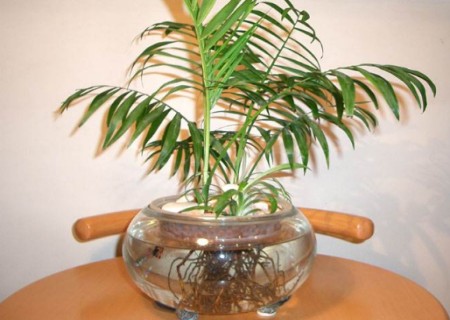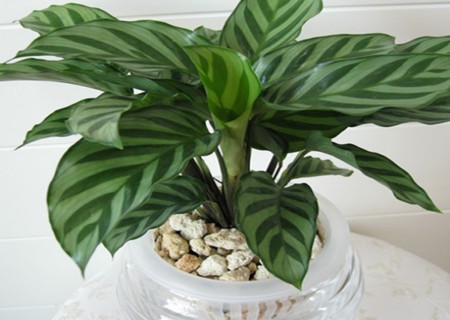Hydroponic Culture method of Pocket Coconut
Pocket coconut is often regarded as one of the preferred green plants for indoor small and medium-sized foliage potted plants because of its beautiful plant shape and convenient management. Pocket coconut also has the effect of purifying harmful substances in the air, such as benzene, trichloroethylene, formaldehyde and so on. It has become a "high-efficiency air purifier" in the plant world, and is very suitable for raising indoors, especially in newly decorated houses.

However, what is more important is that pocket coconuts can not only be grown in soil, but can also be cultured in water according to their different preferences. The following editor will introduce the water culture methods of pocket coconuts.
1. The source of hydroponic plants.
Pocket coconuts used for hydroponic culture can be obtained from soil culture, which is usually converted from soil culture to hydroponic culture by pot root washing. As the name implies, the plant is taken from the soil culture flowerpot, its roots are cleaned, and then hydroponic culture is carried out.
2. Preparation of nutrient solution
If you want to cultivate pocket coconuts in water, you can't do without a nutrient solution to promote the healthy growth of plants. Because the water culture of pocket coconut is soilless cultivation, that is, it uses inorganic fertilizer solution as nutrient solution. On the one hand, you can buy nutrient solution through the flower market, on the other hand, you can also make your own nutrient solution.
3. Prepare the hydroponic container
Hydroponics need suitable containers, and most hydroponic plants can use glass containers, as well as pocket coconuts. However, because the pocket coconut is a kind of foliage plant, it is recommended to use a heavy glass container when choosing a container, because this can avoid the top-heavy and toppling phenomenon when the plant grows luxuriantly.
4. Hydroponics method / process
When hydroponic culture, first put the plants that wash the roots into the container, then put a filter cover of suitable size and depth, and then fill the filter cover with ceramsite, about 3-5 centimeters away from the mouth of the container. then inject pre-purchased or self-made diluted nutrient solution into the container until the roots are completely submerged. Finally, the glass container is placed in a semi-shaded place for maintenance and management, while avoiding direct light.
5. Maintenance and management measures
It is recommended to keep watering 2-3 times a day in summer with high temperature, and control watering in winter; wash ceramsite once every two months to avoid harmful substances against plants; often detect the PH value of nutrient solution, because excessive alkalinity of nutrient solution will cause yellow leaf phenomenon; when the water level in the container drops, water should be replenished to the appropriate depth in time.
Time: 2019-06-08 Click:
- Prev

Can peacock arrowroot be cultured? -Peacock arrowroot culture method
Peacock arrowroot is a typical indoor leaf-viewing green plant, which is beautiful and charming when it is potted, and is highly sought after by flower lovers. In the article introduced in the previous small series, peacock arrowroot is mostly displayed in front of everyone in the form of soil planting. So, can peacock arrowroot be cultured in water? In fact, except for the soil.
- Next

Detailed illustration of the cutting process of Chinese rose
Rose can be cut all the year round, softwood cuttings can be used to propagate in spring and summer, and hardwood cuttings are mainly used in autumn and winter. The following is the detailed diagram of the cutting process to let the rose take root quickly, which is shared by the editor. I hope to help you with the cutting of rose: prepare the materials.
Related
- Fuxing push coffee new agricultural production and marketing class: lack of small-scale processing plants
- Jujube rice field leisure farm deep ploughing Yilan for five years to create a space for organic food and play
- Nongyu Farm-A trial of organic papaya for brave women with advanced technology
- Four points for attention in the prevention and control of diseases and insect pests of edible fungi
- How to add nutrient solution to Edible Fungi
- Is there any good way to control edible fungus mites?
- Open Inoculation Technology of Edible Fungi
- Is there any clever way to use fertilizer for edible fungus in winter?
- What agents are used to kill the pathogens of edible fungi in the mushroom shed?
- Rapid drying of Edible Fungi

